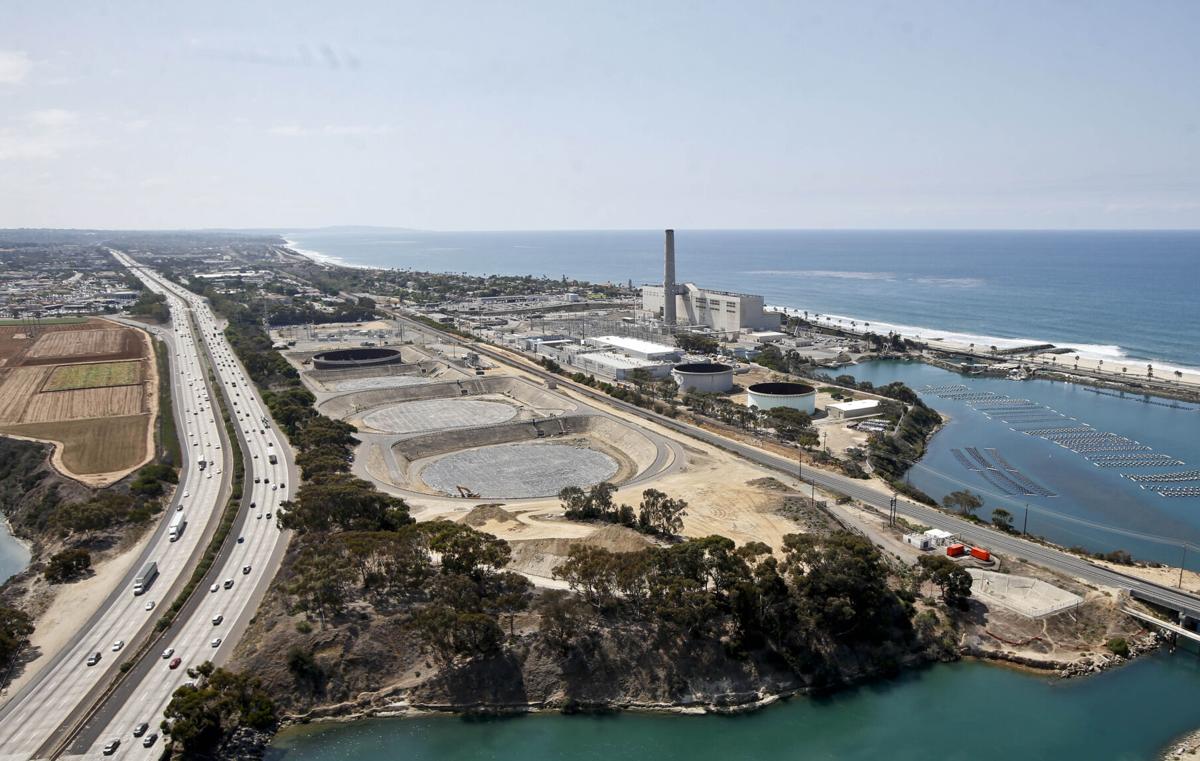PHOENIX — Gov. Doug Ducey is expected to sign legislation as early as this week to spend $1 billion looking for long-term sources of new water for Arizona.
State lawmakers finally lined up the votes for the plan Friday, the last day of their 2022 session. Both the House and Senate agreed to empower a revamped Water Infrastructure Finance Agency to come up with, and fund, ways to deal with the fact Arizona is getting less Colorado River water as its population continues to increase. Given the drought of historic proportions, the situation is expected to get worse.
The plan requires that 75% of the funding be spent to acquire water from outside of the state, which could include building a plant to desalinate water from the Sea of Cortez in Sonora. State officials have also mentioned exploring the possibility of a pipeline from the Mississippi River.
But several legislators from both parties said the plan, originally proposed by the Republican governor, failed to recognize that Arizona is facing immediate problems and cannot depend only on grand projects that could take a decade and carry enormous price tags.
They agreed to go along Friday, however, when an extra $200 million in funding was added at the last minute. That money is reserved for more immediate relief including reducing water consumption, increasing efficiency and promoting various water-saving projects, including rainwater harvesting, turf removal, and “gray water’’ systems for outdoor watering.
Sen. Lisa Otondo, D-Yuma, one of the architects of the deal, said thinking more short-term is “essential at this point in Arizona.’’
Ducey said in a prepared statement: “With the passage of this legislation, we are rising to one of the most consequential challenges of our time.
“We are securing Arizona’s water future. We’re protecting our water supply, strengthening our conservation strategies and ensuring that our future remains bright,” he said.
‘Out of time and out of chances’
What’s behind all this is the realization that a drought contingency plan adopted by Arizona in 2019 is not going to save the state.
The idea was for Arizona and other states to reduce their use of Colorado River water in a bid to stabilize the level of Lake Mead. But the lake has continued to drop amid hotter and dryer weather.
The state has followed up with what could be considered stop-gap measures, such as acquiring water from the tribes, which have a higher claim on water from the Colorado and Gila rivers.
But officials say there just isn’t going to be enough to go around, especially if farming, which consumes 70% of the water used in Arizona, is going to continue.
So Ducey unveiled the plan to have the state invest the $1 billion over three years to find new sources of water.
He proposed establishing a new state agency to acquire those rights, build the infrastructure and own the water.
The idea of a new agency proved to be a nonstarter, however, for lawmakers reticent to create another bureaucracy. Instead, they settled on revamping the existing Water Infrastructure Finance Agency.
After Democrats complained that the agency’s leadership would all be chosen by Republicans, they were given some input.
But that left the fact the lion’s share of the money was still earmarked for big projects with long timelines. Rep. Andres Cano, D-Tucson, said that won’t do.
“Arizona is facing a water crisis,’’ Cano said. “Temperatures are rising, wildfires are raging, and water supplies are drying up. We need to learn to live with less. We are out of time and out of chances.”
So legislative negotiators found the extra $200 million that could go to something more immediate, with an emphasis on conservation and the kind of research and projects that can make what little Arizona has go farther.
“And here’s the best part,’’ Cano said. “These dollars can be used as soon as this bill becomes law, not in 20 years, not in 30 years, now.’’
Rep. Gail Griffin, R-Hereford, said another immediate need is recharging the state’s often-depleting aquifers.
“Ninety-five percent of the rain we get evaporates before it can get into the ground,’’ she said.
Still, lawmakers acknowledged, they have to be thinking not just about short-term water needs but about finding a sustainable — and permanent — source from outside of the state.
Within the state, “If I have a water right and you have a water right, and we sell it to a third party, it kind of moves around, we trade paper,” said Rep. Neal Carter, R-San Tan Valley. “It doesn’t create new water,’’ so new sources are needed.
Carter said while there should be conservation efforts, he’s not sure how much more can be saved.
“Arizona does pretty well with conserving water,’’ he said. “We’re using less water now than in prior decades.’’
“Augmentation is needed,’’ agreed Rep. Sarah Liguori, D-Phoenix. But she added: “Desalination is years and years out. In two years we could be facing the ultimate need of immediate water.’’
In the end, the water legislation passed with just one negative vote each in the House and the Senate. Senate President Karen Fann, R-Prescott, called that “amazing.’’
“Water is a difficult subject to work with,’’ Fann said.
Rep. Mitzi Epstein, D-Tempe, voted “no,” as did Sen. Michelle Ugenti-Rita, R-Scottsdale.
“I applaud the work that’s been done,’’ Epstein said.
But she said the state should not be spending $1 billion in a search for new water until it deals with the existing legal issues here, including the laws on who is entitled to pump water from the ground.
In about 80% of Arizona, there is no state regulation of groundwater pumping.
“I disagree with the idea that the person with the most money can go to an aquifer, dig the deepest well, and take all the water away from everybody else who owns property around it,’’ Epstein said.





